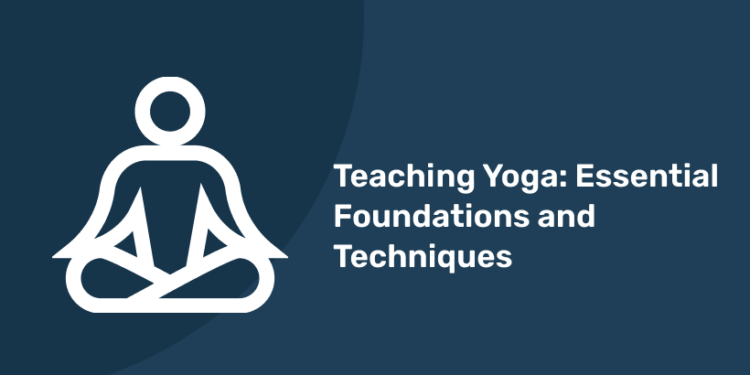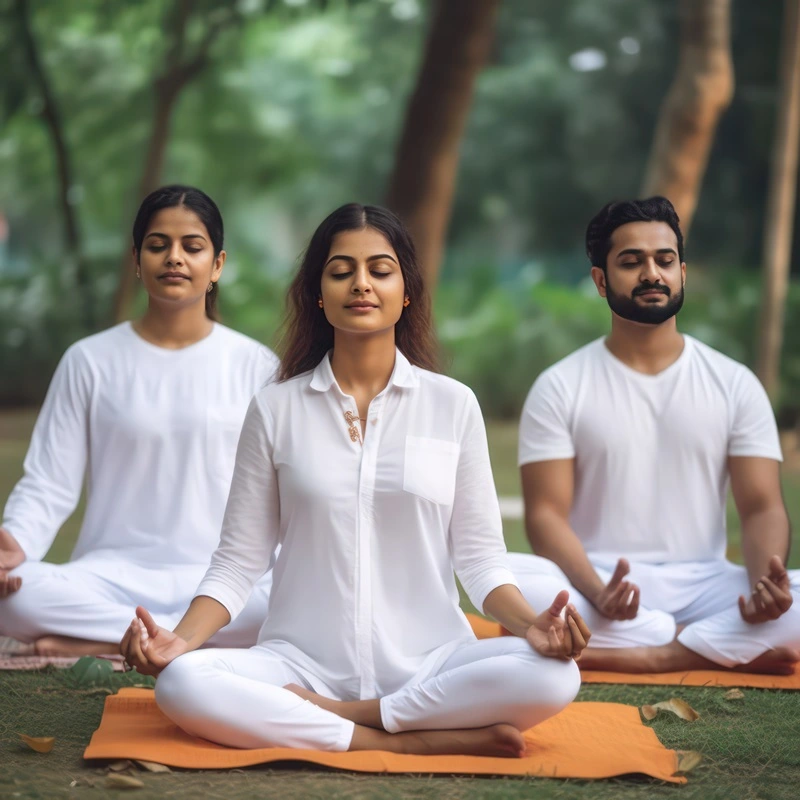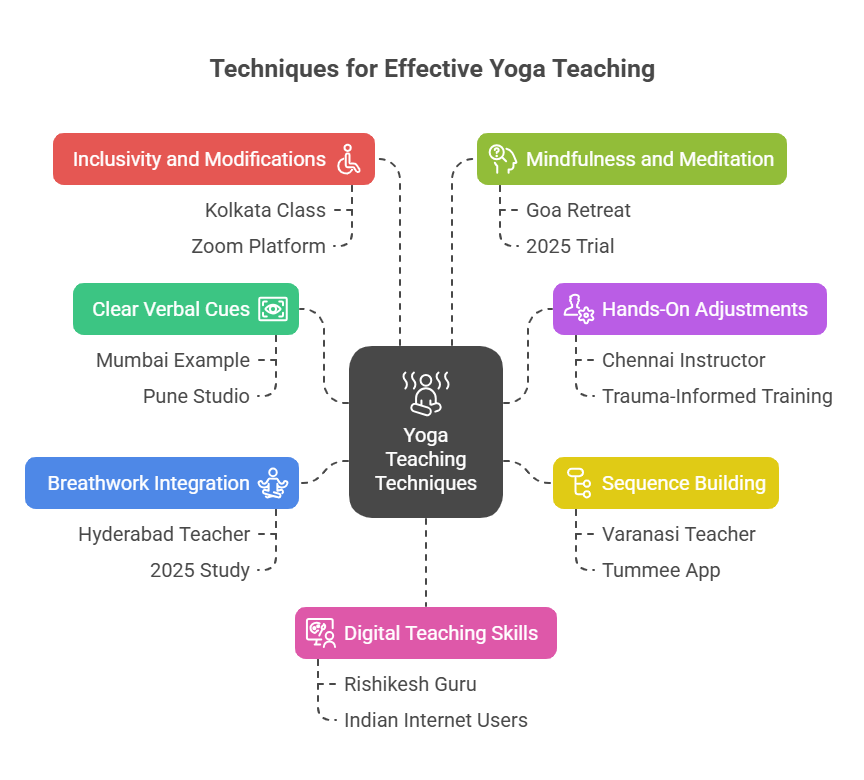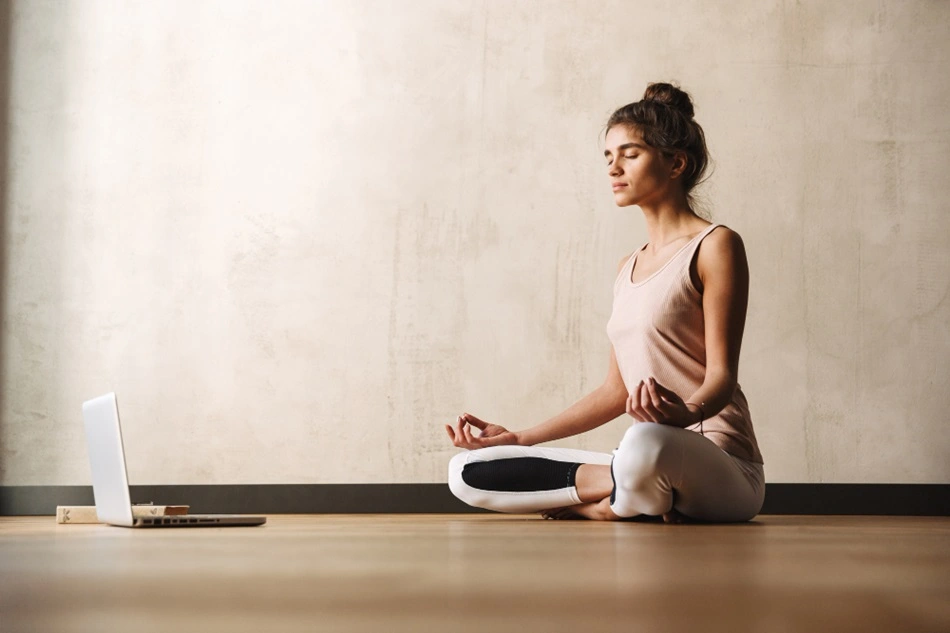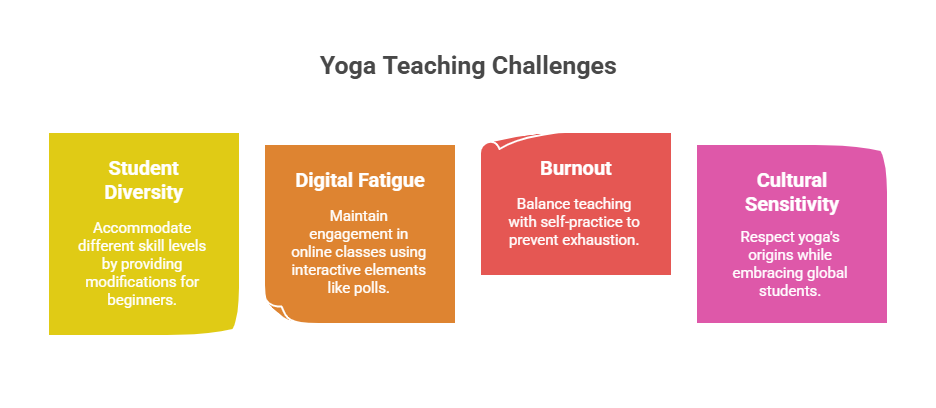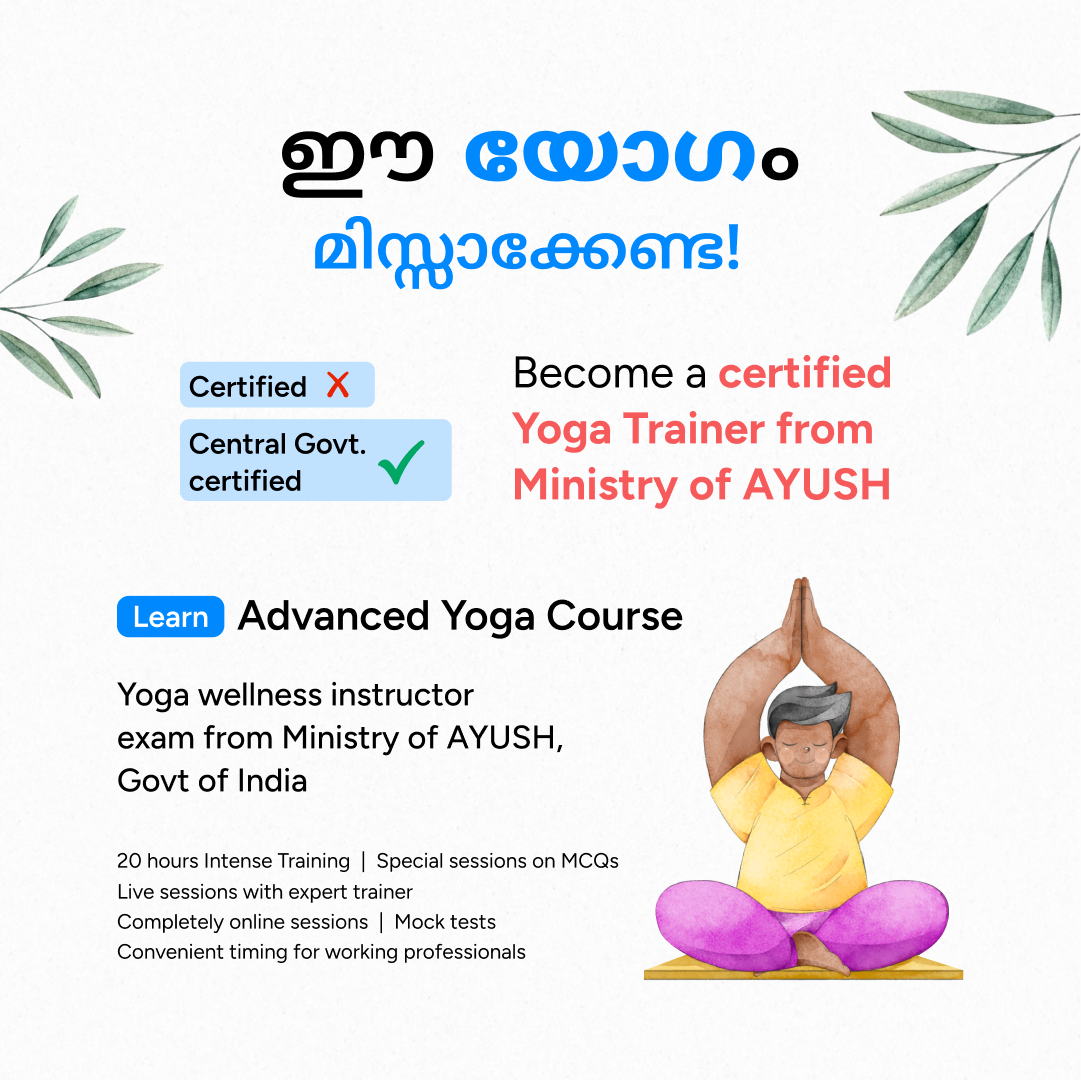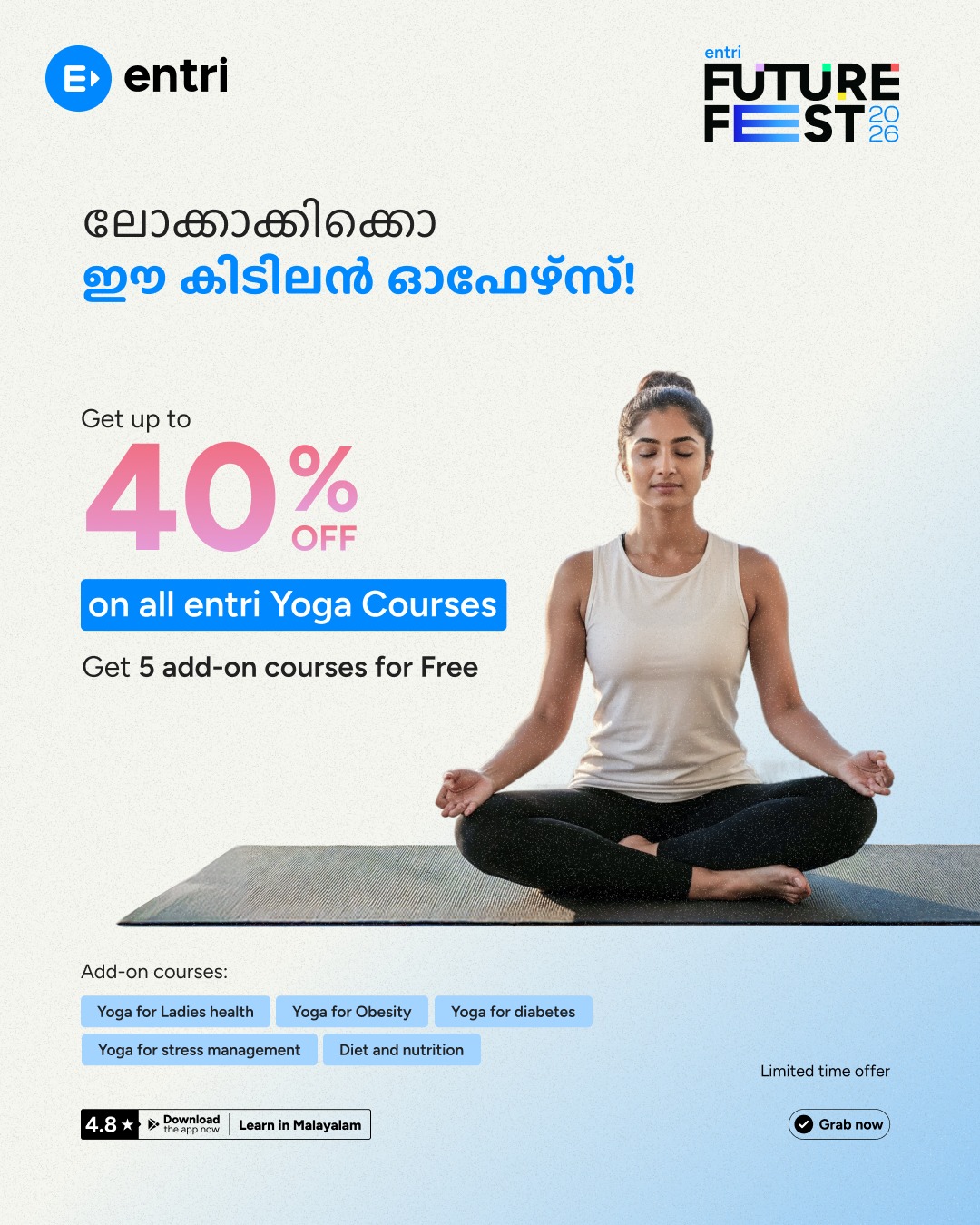Table of Contents
Teaching yoga means teaching students various yoga practices which includes postures, breath control and meditation. Yoga teachers get formal training and certification to become qualified teachers. They design classes according to the needs and abilities of their students and focus on physical and mental well being. Effective communication, clear guidance and creating a positive and inclusive environment is key to good yoga teaching. Teachers aim to facilitate personal growth, relaxation and physical health in their students through yoga. In this article we will discuss Teaching Yoga: Essential Foundations and Techniques.
Your Yoga Career Starts Here! Get Free Demo Classes Here!
Essential Foundations for Teaching Yoga
To teach yoga well you need a strong foundation. Here are the core pillars every aspiring teacher in India should master:
- Deep Knowledge: Know asanas, pranayama and texts like Patanjali’s Yoga Sutras. A Kerala teacher weaving Ayurvedic wisdom into classes builds credibility.
- Authenticity: Share your personal yoga journey, like a Delhi teacher’s story of finding calm in chaos, to connect with students.
- Cultural Roots: Honor yoga’s Indian heritage, as seen in Rishikesh’s Vedic chants, while embracing global diversity.
- Ethics: Follow ahimsa (non-violence) and create inclusive spaces, vital in 2025’s diverse classrooms.
- Certification: Complete a Yoga Alliance accredited course, like Sivananda’s 200-hour training, for professional legitimacy.
7 Techniques for Teaching Yoga
1: Which of these is the primary goal of yoga practice?
Here are 7 actionable techniques to take your teaching to the next level in 2025, with practical tips and India specific examples:
- Clear Verbal Cues
Guide poses with precise and heartfelt instructions, like a Mumbai teacher saying, “Root your feet like a banyan tree for Warrior II.” Practice clear cues in small groups to ensure beginners in a Pune studio understand alignment, boosting confidence and safety. - Hands-On Adjustments
Gentle and consent based adjustments, like a Chennai instructor aligning hips in Downward Dog, enhance form. In 2025, trauma informed training ensures sensitivity, especially in diverse classes. Always ask permission to respect students’ boundaries. - Sequence Building
Create flows that balance effort and rest, like a Varanasi teacher combining Vinyasa with Savasana for focus. Use apps like Tummee to plan sequences, for Bengaluru’s corporate students who need stress relief. - Breathwork Integration
Teach pranayama like Nadi Shodhana to calm minds, as a Hyderabad teacher does before meditation. A 2025 study shows breathwork increases focus by 25%. Guide 5-minute sessions to help students manage anxiety. - Inclusivity and Modifications
Offer variations, like chair yoga for seniors in a Kolkata class, for accessibility. In 2025, digital platforms like Zoom allow teachers to reach rural India, adapt poses for all levels and abilities. - Mindfulness and Meditation
Lead guided meditations, like a Goa retreat’s 10-minute Dhyana, to deepen presence. A 2025 trial found meditation increased student retention by 15%. Use mantras or breath focus to anchor distracted minds. - Digital Teaching Skills
Master online platforms like Instagram Live, as a Rishikesh guru does, to reach 700 million Indian internet users. Invest in a good microphone and lighting for Zoom classes, to ensure clear delivery.
Become a Certified Yoga Instructor
Yoga Teacher Training Course by Entri App: Master authentic yoga techniques, earn certification, and build a successful career as a professional yoga instructor.
Join Now!Benefits of Effective Yoga Teaching
-
Student Transformation: Boosts focus by 20%, helping Delhi students excel in exams.
-
Community Building: Creates loyal tribes, with 80% retention in inclusive classes, per industry data.
-
Mental Health Support: Reduces stress by 18%, vital for Mumbai’s corporate workers.
-
Global Reach: Online classes connect teachers to international students, amplifying impact.
-
Personal Fulfillment: Teaching, like a Pune instructor’s journey, brings purpose and joy.
For example, a 2024 Mumbai studio saw 30% more sign-ups after a teacher’s trauma-informed classes went viral on #YogaIndia2025.
Challenges to Navigate
-
Student Diversity: Adapt to varied skill levels; offer modifications for beginners.
-
Digital Fatigue: Keep online classes engaging with interactive elements like polls.
-
Burnout: Balance teaching with self-practice to avoid exhaustion, common in India’s busy studios.
-
Cultural Sensitivity: Respect yoga’s roots while welcoming global students, a must in 2025.
Tips for Aspiring Yoga Teachers
-
Get Certified: Join a Yoga Alliance course at Entri.
-
Practice Daily: Refine your own asanas and pranayama for authenticity.
-
Build a Community: Host free meditation sessions or #MindfulIndia challenges on Instagram.
-
Learn Tech: Use Zoom or YouTube for digital classes, reaching rural India.
-
Stay Curious: Explore 2025 trends like restorative yoga via online workshops.
Your Journey to a Fulfilling Yoga Career Starts Here! Get Free Demo Classes Here!
Become a Certified Yoga Instructor
Yoga Teacher Training Course by Entri App: Master authentic yoga techniques, earn certification, and build a successful career as a professional yoga instructor.
Join Now!Final Thoughts: Light Up Lives with Yoga
Teaching yoga is like planting a seed, it grows into a vibrant community of calm and connection. As India’s yoga scene blossoms, these foundations and techniques can make you a teacher who inspires. I’m moved by how a single class can shift someone’s day. Ready to lead with heart? Start your journey, share your story below, and let’s spread yoga’s magic across India!
| Also Read | |
| Different Pranayama Techniques | |
| How to do Hanumanasana (Monkey Pose) and it’s Benefits | Paths of Yoga |
| How To Do Padmasana (Lotus Position) And It’s Benefits | Rocket Yoga |
Become a Certified Yoga Instructor
Yoga Teacher Training Course by Entri App: Master authentic yoga techniques, earn certification, and build a successful career as a professional yoga instructor.
Join Now!Frequently Asked Questions
How can I become a certified yoga teacher?
To become a certified yoga teacher, you typically need to complete a Yoga Teacher Training (YTT) program at a reputable yoga school or studio. These programs vary in duration and curriculum but generally cover yoga philosophy, asanas, pranayama, teaching methodology, and practical teaching experience. After completing the program, you’ll receive a certification that allows you to teach yoga.
What are the different styles of yoga, and should I specialize in one?
There are numerous yoga styles, such as Hatha, Vinyasa, Ashtanga, Bikram, Iyengar, Kundalini, and more. You can choose to specialize in one style that resonates with you, but it’s beneficial to have a well-rounded understanding of various styles to cater to different students’ needs.
How do I create effective yoga sequences?
Effective yoga sequences should be well-balanced, gradually progressing from warm-up to peak poses, and include stretches, strength-building postures, and relaxation. Consider your students’ needs, levels, and any injuries or limitations when designing sequences.
What is the role of mindfulness and meditation in yoga teaching?
Mindfulness and meditation are integral to yoga practice. As a teacher, you can guide students in meditation techniques to enhance their mental focus, stress reduction, and inner peace.
How can I ensure a safe and inclusive yoga class?
Safety and inclusivity are paramount. Provide clear instructions, offer modifications, and encourage open communication with your students. Be mindful of cultural sensitivities and create a welcoming environment for all.
Do I need to continue my education as a yoga teacher?
Yes, continuing education is crucial for growth and staying current in the field. Attend workshops, advanced training programs, and pursue further certifications to expand your knowledge and teaching skills.
What ethical considerations should I keep in mind as a yoga teacher?
Ethical considerations include maintaining professional boundaries, respecting student privacy, and promoting a non-judgmental and compassionate atmosphere. Uphold ethical principles, including honesty, integrity, and empathy.
How do I market myself as a yoga teacher?
Building a student base often involves marketing efforts such as creating a website, using social media, networking within the yoga community, and offering workshops or classes. Word-of-mouth referrals and maintaining a strong online presence can also help.
Can I teach yoga online?
Yes, teaching yoga online has become increasingly popular. You can use platforms like Zoom or YouTube to offer live or pre-recorded classes. Effective online teaching involves clear communication and making adjustments for the virtual setting.
How do I handle challenging situations or disruptive students in class?
Address disruptive behavior with patience and understanding. Communicate privately if necessary and maintain a compassionate approach. Create a safe and supportive atmosphere for all students.


